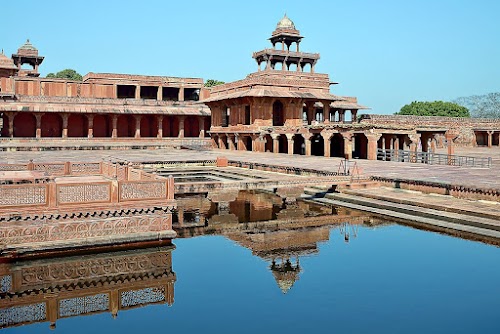
Fatehpur Sikri Fort
Agra, India
- Admire the intricate Panch Mahal
- Capture stunning photographs
- Explore Mughal palaces and mosques
- Learn about Akbar's reign
- Visit the Buland Darwaza
- Witness the grandeur of Jama Masjid
Known for:
Description:
Fatehpur Sikri, near Agra, is a mesmerizing UNESCO World Heritage Site showcasing Mughal architecture. Built by Emperor Akbar in the 16th century, this deserted city boasts stunning palaces, mosques, and public buildings, reflecting a blend of Persian, Islamic, and Indian styles. The majestic Buland Darwaza, Jama Masjid, and Panch Mahal are architectural marvels. Explore the intricate details of Diwan-i-Khas and Diwan-i-Am, offering glimpses into the Mughal court. The city's layout and design reveal Akbar's vision of a planned city, though it was abandoned shortly after completion due to water scarcity. A visit to Fatehpur Sikri is a journey back in time, immersing you in the grandeur and artistry of the Mughal era.
History:
Fatehpur Sikri, meaning "City of Victory," was built by Emperor Akbar between 1571 and 1585. It served as the Mughal capital for 14 years before being abandoned due to water scarcity. The city was built to honor Sufi saint Salim Chishti, who predicted the birth of Akbar's heir. It showcases a unique blend of architectural styles, reflecting Akbar's religious tolerance and patronage of the arts. The city's layout and the individual buildings tell stories of the Mughal empire's power and cultural influences. Though deserted, Fatehpur Sikri remains remarkably well-preserved, offering a vivid picture of life in the Mughal court.